How SaaS Help Small Businesses To Flourish Amid Contingencies

How SaaS Help Small Businesses To Flourish Amid Contingencies
The adoption of SaaS solutions among businesses has been growing at an astonishing pace in the last year. SaaS, also referred to as Software as a Service, has become a popular business model as it has the potential to streamline business operations at a pocket-friendly cost. These days, more and more businesses are going digital and realizing the importance of modern technology tools for their enterprise. Having streamlined and centralized processes allow entrepreneurs to imagine a picture of their business operations before making any important decisions. No doubt, there are many Software and solutions available in the market, but what makes SaaS something special and important? The simple reason is in this business model, companies host and license their Software from a cloud server based on subscription. Hence, it’s been booming over the years. Moreover, SaaS-based solutions are flexible, affordable, and scalable; entrepreneurs can easily optimize their business models and make necessary changes to expand their reach. The adoption of the SaaS business model keeps increasing, especially among the pandemic, and research conducted by Deloitte said that over 93% of companies are thinking of moving to the cloud. Even though digital transformation has become a hot topic in the business world, many entrepreneurs are still not familiar with SaaS solutions. SaaS solutions have won the hearts of thousands of companies worldwide; for instance, Oracle, Salesforce, Zendesk, etc., help other businesses automate their workflow cost-effectively. Given that many enterprises, logistics, transportation, restaurants, are moving away from manual operations like pen and paper to SaaS solutions to stay competitive in the business world, no wonder why the demand for booking software similar to uber increasing as it ensures faster growth of businesses in a short time. Now before jumping to benefits and examples, let’s go through the simple meaning of SaaS and its history.
What is SaaS?
SaaS means Software as a Service, a cloud-based software model that the third-party application provider hosts. Using SaaS, a service provider accesses the application and its data by paying monthly or yearly subscription fees. For instance, Amazon Prime, Salesforce, Hubspot, Trello, Mailchimp, etc.
History of SaaS at a Glance
SaaS is not a new approach in the IT world, but yes got attention in the last few years. Earlier, employees in the company used to connect to a company’s in-house system to access all the work-related applications, data and attendance, even that was stored on a central level. But now you can see the revolution it has made. From Google Drive to different project management tools to cloud-based attendance software, the SaaS business model has made its way across all scales of businesses. SaaS continues to automate businesses and enhance work productivity, the world is leaning on this business model, and Transparency Market Research is even anticipating that the SaaS market is projected to reach $164.29 billion by 2022. For instance, Salesforce is one of the best CRM software that follows this business model and consists of 150,000 clients globally and brands such as Godrej, KFC, Electric, etc., using Salesforce to streamline their marketing tasks.
Why Small Businesses Opt For SaaS
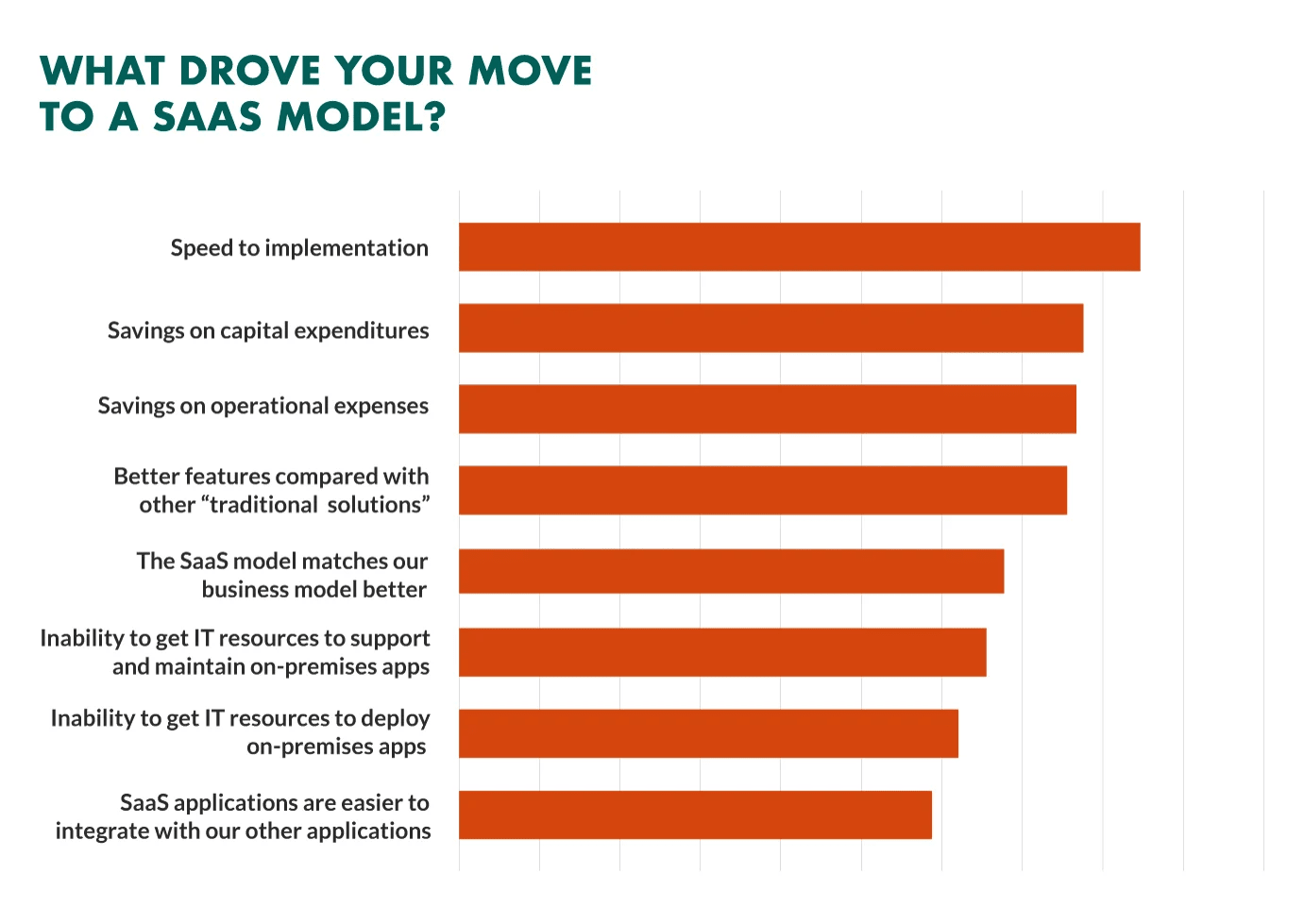 Source: SuperOffice CRM As mentioned above, SaaS’s popularity keeps soaring, especially among small and medium scale businesses; why? Because it offers a plethora of advantages to enterprises while spending less. In the past few years, Software as a Service has attracted many industry giants in the IT landscape. Keeping in mind the ongoing situation, it can be forecasted that the market for SaaS will soon replace traditional app and website development trends and will dominate the market in the years to come. From small retailers to restaurants to transportation to logistic businesses shifting to the SaaS model as it has got more traction across the globe and requires less capital and investment. Companies of all scales are now deploying SaaS as the next best option to automate their business. Earlier, only large-scale corporations could spend huge dollars to automate their business, but now, small and medium scale businesses are trying to compete with them and embracing SaaS solutions to stay one step ahead in the competitive curve. As per the report from Computer Economics, more than 60% of companies have directly or indirectly implemented at least one SaaS solution to their business, while 38% are thinking of increasing their investment in the coming days. Here we have taken a real-life example so that one can easily understand the concept behind the growing popularity of SaaS models and why it is the best solution for small businesses. Adobe, the popular graphics, and photo editing software company, earlier worked on the licensed-based concept, but it had adopted a cloud-based setup in 2012. Now customers have to pay monthly fees to access graphics software. Now you must be thinking about why popular companies such as Adobe moved to the SaaS business model and why your enterprise should walk on the same path? Have a look at the benefits it offers,
Source: SuperOffice CRM As mentioned above, SaaS’s popularity keeps soaring, especially among small and medium scale businesses; why? Because it offers a plethora of advantages to enterprises while spending less. In the past few years, Software as a Service has attracted many industry giants in the IT landscape. Keeping in mind the ongoing situation, it can be forecasted that the market for SaaS will soon replace traditional app and website development trends and will dominate the market in the years to come. From small retailers to restaurants to transportation to logistic businesses shifting to the SaaS model as it has got more traction across the globe and requires less capital and investment. Companies of all scales are now deploying SaaS as the next best option to automate their business. Earlier, only large-scale corporations could spend huge dollars to automate their business, but now, small and medium scale businesses are trying to compete with them and embracing SaaS solutions to stay one step ahead in the competitive curve. As per the report from Computer Economics, more than 60% of companies have directly or indirectly implemented at least one SaaS solution to their business, while 38% are thinking of increasing their investment in the coming days. Here we have taken a real-life example so that one can easily understand the concept behind the growing popularity of SaaS models and why it is the best solution for small businesses. Adobe, the popular graphics, and photo editing software company, earlier worked on the licensed-based concept, but it had adopted a cloud-based setup in 2012. Now customers have to pay monthly fees to access graphics software. Now you must be thinking about why popular companies such as Adobe moved to the SaaS business model and why your enterprise should walk on the same path? Have a look at the benefits it offers,
- Improve business operations
- Meet customer’s expectations
- Automates manuals tasks
- Affordable
- Scalability
- Great and updated features
- Secure
Well, the above benefits are enough to understand why SaaS is gaining huge popularity across the globe and why small businesses should consider implementing the one in their business today. If you want to check more, have a look at SaaS trends for 2021.
How SaaS Help Brands to Survive Amid a Difficult Time
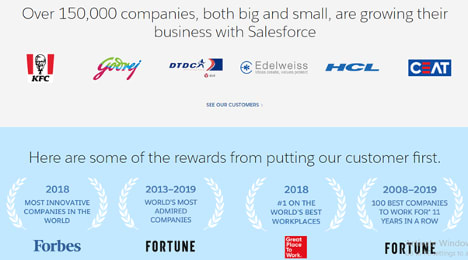 Source: Salesforce The year 2020 was awful to everyone, especially for the business sector. Small businesses were hit most due to the pandemic. On the other hand, people’s inclination towards digital shopping and ordering keeps increasing as it keeps them safe and gets things done quickly. Therefore, small retailers such as restaurants, mom-and-pop stores are shifting to digital platforms to stay afloat in the saturated business world. Here SaaS business models help them a lot, as they don’t need to pay attention to the server, hosting, infrastructure, etc. All they can choose is the best SaaS model for their business and pay based on the usage and requirement. Isn’t it a boon in this challenging time? Yes, it is. Lucien Wynn, managing director at Oneserve, states that brands like Microsoft, Salesforce, Adobe, and Oracle now offer their products subscription-based even though their traditional business models were popular in the market with a large user base. Now it’s worth watching to explore how the SaaS business model influences modern business and inspires them to take advantage of it in multiple ways.
Source: Salesforce The year 2020 was awful to everyone, especially for the business sector. Small businesses were hit most due to the pandemic. On the other hand, people’s inclination towards digital shopping and ordering keeps increasing as it keeps them safe and gets things done quickly. Therefore, small retailers such as restaurants, mom-and-pop stores are shifting to digital platforms to stay afloat in the saturated business world. Here SaaS business models help them a lot, as they don’t need to pay attention to the server, hosting, infrastructure, etc. All they can choose is the best SaaS model for their business and pay based on the usage and requirement. Isn’t it a boon in this challenging time? Yes, it is. Lucien Wynn, managing director at Oneserve, states that brands like Microsoft, Salesforce, Adobe, and Oracle now offer their products subscription-based even though their traditional business models were popular in the market with a large user base. Now it’s worth watching to explore how the SaaS business model influences modern business and inspires them to take advantage of it in multiple ways.
Unique Features and Update Enhance Business Productivity
Imagine, you have spent huge bucks on purchasing Software, and now you also have to pay for each update, looking like a tedious and expensive job, right? SaaS has overcome this issue as you don’t need to spend a huge amount on features and updates. You can increase the productivity of your resources and run a business seamlessly with advanced features. And this is one major benefit SaaS offers to entrepreneurs. It means your team members can focus on important tasks rather than wasting time figuring out how the system will work after an update. Further, continuous updates and innovative features help you stay competitive and attract a user base. For instance, amid the pandemic, all restaurant business owners must embrace contactless delivery and payment features. You will instantly avail of this feature using a SaaS platform, unlike you don’t need to upgrade it and pay an extra charge manually. Consequently, your system will be up-to-date and enable you to find the perfect solution that upscales your business.
Ease of Use and Dedicated Support
SaaS applications and Software usually are user-friendly since they are developed using modern technology tools keeping in mind user preferences and business requirements. Further, the SaaS provider also offers a demo and freemium model to test the Software, which means before making a final decision, you can test the Software and check whether it fulfills your business requirements or not. It looks like buying a new car, trying it, testing it, and seeing what you like and whatnot because SaaS providers offer lots of flexibility in terms of features and functionality. From theme changes to features to other important integrations, SaaS offers lots of flexibility to their clients.
Cost-effective Solution
This is the most influencing factor of SaaS; entrepreneurs don’t need to spend huge money on automation. They can choose the Software and pay based on the usage and requirements. It eliminates upfront costs such as hardware, installation, and upgrades. Instead of paying large amounts on hardware and software purchases, SaaS applications can be easily deployed and maintained. With SaaS, you don’t need to pay upfront costs. Buy the product once and unsubscribe whenever you want. For instance, with Netflix and Spotify, you can unsubscribe anytime. Ultimately, this is a low-risk affair for the companies, and they won’t think twice about investing further.
Flexibility and Scalability
If you want to achieve success, you need to adopt a flexible approach. It means businesses need to modify their working standards to meet customer’s expectations. SaaS applications allow you to choose the model and easily change it when your business requirement changes. Moreover, enterprises also won’t think twice as they have not spent huge money while buying your services. Thanks to the flexible and scalable subscription-based licensing, SaaS business models can scale easily and manage large volumes of data from different sources in a hassle-free manner.
Location Independence
This is the most critical benefit of SaaS applications. Take an example of Google Drive. You can access it anywhere, anytime with anyone. In turn, this ensures that no matter where your employees are located and working, they can accomplish important tasks within a timeline without any misunderstanding. It lets them efficiently manage their important tasks and enhance their productivity.
Examples of Popular SaaS-based Platforms
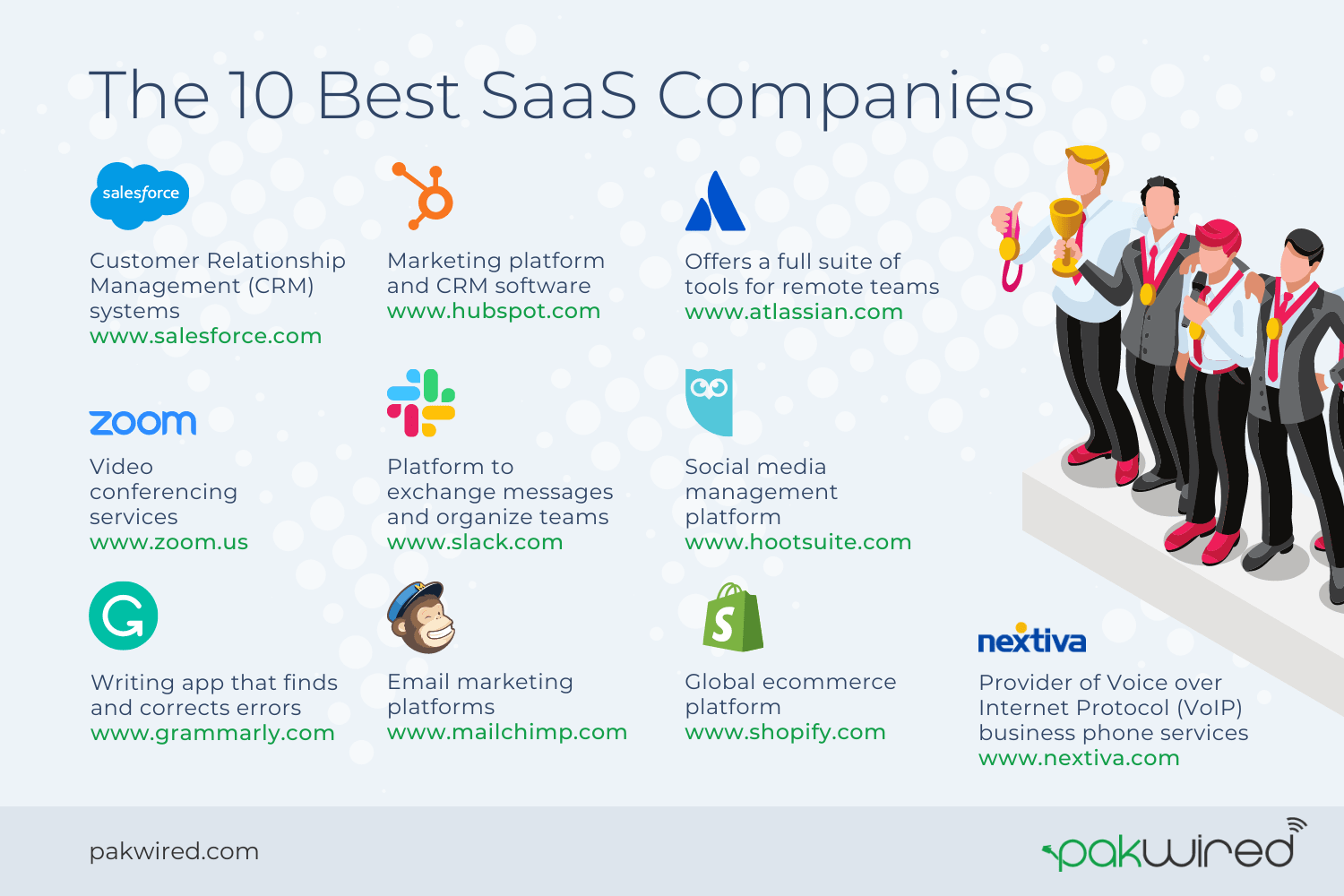 Source: PakWired After going through the meaning and benefits of SaaS applications, now let’s directly jump to the popular examples of SaaS apps and look at how these brands are driving a revolution in the IT industry.
Source: PakWired After going through the meaning and benefits of SaaS applications, now let’s directly jump to the popular examples of SaaS apps and look at how these brands are driving a revolution in the IT industry.
- Salesforce
- Dropbox
- Google Applications (G Suite)
- Hubspot
- Slack
- Adobe Creative Suite
- Mailchimp
These are the most successful examples of SaaS applications dominating the market in their respective areas.
SaaS Prepare Small Businesses for Serious Competition
Companies using SaaS-based apps are increasing in number, lower capital requirements and scalability are the key reasons that entice small business owners. Further, premium benefits such as process automation, reducing human error, lower investment, etc., can be availed by small business owners while spending less. Businesses are always hunting for solutions that can offer the above benefits, and SaaS fits the requirement in today’s competitive scenario.
What is SaaS?
SaaS means Software as a Service, a cloud-based software model that the third-party application provider hosts. Using SaaS, a service provider accesses the application and its data by paying monthly or yearly subscription fees. For instance, Amazon Prime, Salesforce, Hubspot, Trello, Mailchimp, etc.History of SaaS at a Glance
SaaS is not a new approach in the IT world, but yes got attention in the last few years. Earlier, employees in the company used to connect to a company’s in-house system to access all the work-related applications, data and attendance, even that was stored on a central level. But now you can see the revolution it has made. From Google Drive to different project management tools to cloud-based attendance software, the SaaS business model has made its way across all scales of businesses. SaaS continues to automate businesses and enhance work productivity, the world is leaning on this business model, and Transparency Market Research is even anticipating that the SaaS market is projected to reach $164.29 billion by 2022. For instance, Salesforce is one of the best CRM software that follows this business model and consists of 150,000 clients globally and brands such as Godrej, KFC, Electric, etc., using Salesforce to streamline their marketing tasks.Why Small Businesses Opt For SaaS
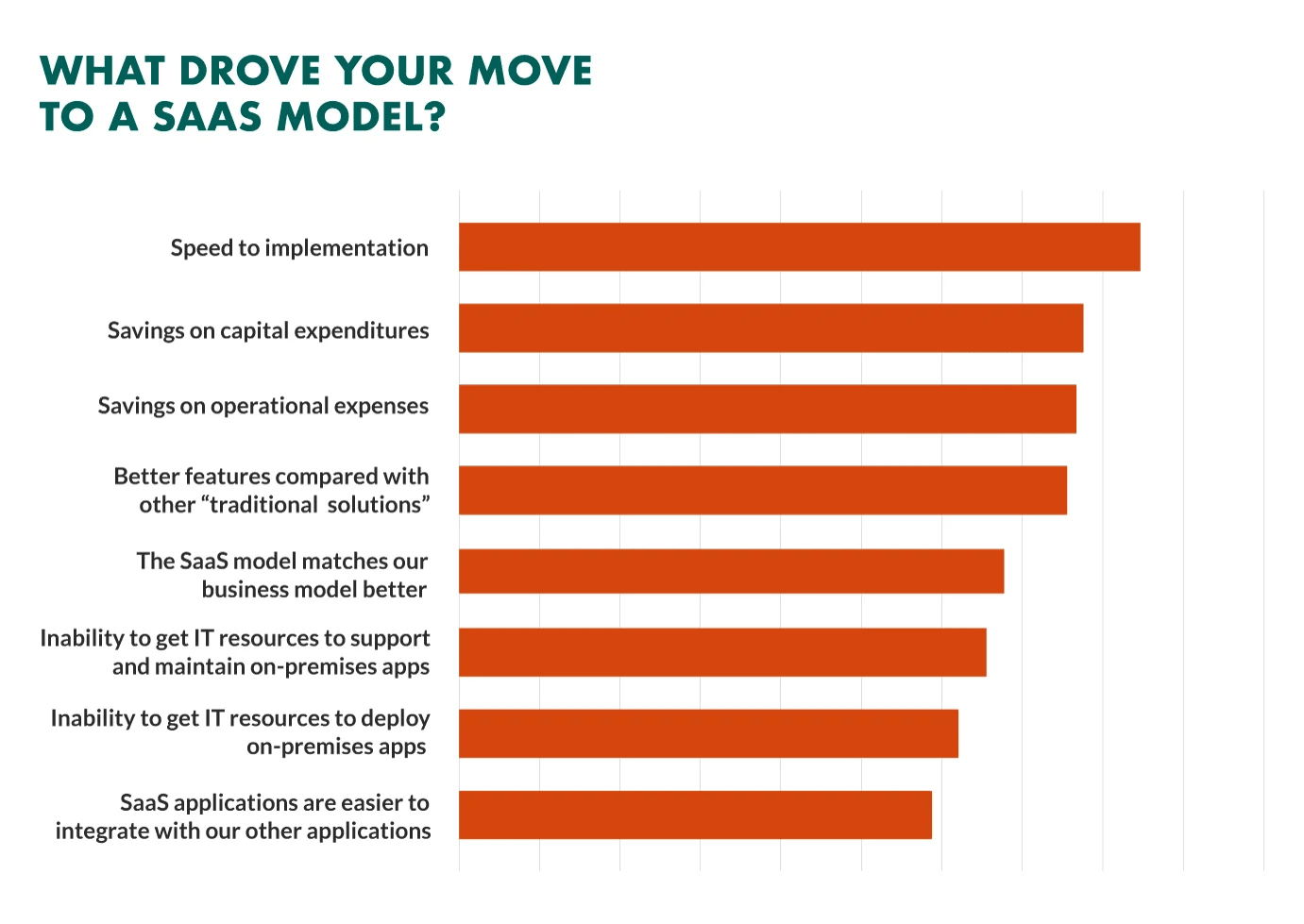 Source:
SuperOffice CRM As mentioned above, SaaS’s popularity keeps soaring, especially among small and medium scale businesses; why? Because it offers a plethora of advantages to enterprises while spending less. In the past few years, Software as a Service has attracted many industry giants in the IT landscape. Keeping in mind the ongoing situation, it can be forecasted that the market for SaaS will soon replace traditional app and website development trends and will dominate the market in the years to come. From small retailers to restaurants to transportation to logistic businesses shifting to the SaaS model as it has got more traction across the globe and requires less capital and investment. Companies of all scales are now deploying SaaS as the next best option to automate their business. Earlier, only large-scale corporations could spend huge dollars to automate their business, but now, small and medium scale businesses are trying to compete with them and embracing SaaS solutions to stay one step ahead in the competitive curve. As per the report from
Computer Economics, more than 60% of companies have directly or indirectly implemented at least one SaaS solution to their business, while 38% are thinking of increasing their investment in the coming days. Here we have taken a real-life example so that one can easily understand the concept behind the growing popularity of SaaS models and why it is the best solution for small businesses. Adobe, the popular graphics, and photo editing software company, earlier worked on the licensed-based concept, but it had adopted a cloud-based setup in 2012. Now customers have to pay monthly fees to access graphics software. Now you must be thinking about why popular companies such as Adobe moved to the SaaS business model and why your enterprise should walk on the same path? Have a look at the benefits it offers,
Source:
SuperOffice CRM As mentioned above, SaaS’s popularity keeps soaring, especially among small and medium scale businesses; why? Because it offers a plethora of advantages to enterprises while spending less. In the past few years, Software as a Service has attracted many industry giants in the IT landscape. Keeping in mind the ongoing situation, it can be forecasted that the market for SaaS will soon replace traditional app and website development trends and will dominate the market in the years to come. From small retailers to restaurants to transportation to logistic businesses shifting to the SaaS model as it has got more traction across the globe and requires less capital and investment. Companies of all scales are now deploying SaaS as the next best option to automate their business. Earlier, only large-scale corporations could spend huge dollars to automate their business, but now, small and medium scale businesses are trying to compete with them and embracing SaaS solutions to stay one step ahead in the competitive curve. As per the report from
Computer Economics, more than 60% of companies have directly or indirectly implemented at least one SaaS solution to their business, while 38% are thinking of increasing their investment in the coming days. Here we have taken a real-life example so that one can easily understand the concept behind the growing popularity of SaaS models and why it is the best solution for small businesses. Adobe, the popular graphics, and photo editing software company, earlier worked on the licensed-based concept, but it had adopted a cloud-based setup in 2012. Now customers have to pay monthly fees to access graphics software. Now you must be thinking about why popular companies such as Adobe moved to the SaaS business model and why your enterprise should walk on the same path? Have a look at the benefits it offers,
- Improve business operations
- Meet customer’s expectations
- Automates manuals tasks
- Affordable
- Scalability
- Great and updated features
- Secure
How SaaS Help Brands to Survive Amid a Difficult Time
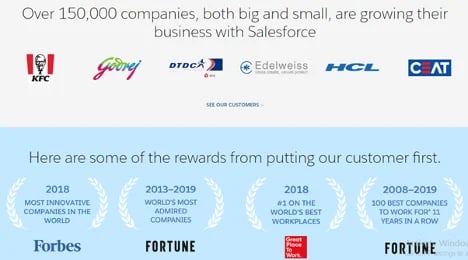 Source:
Salesforce The year 2020 was awful to everyone, especially for the business sector. Small businesses were hit most due to the pandemic. On the other hand, people’s inclination towards digital shopping and ordering keeps increasing as it keeps them safe and gets things done quickly. Therefore, small retailers such as restaurants, mom-and-pop stores are shifting to digital platforms to stay afloat in the saturated business world. Here SaaS business models help them a lot, as they don’t need to pay attention to the server, hosting, infrastructure, etc. All they can choose is the best SaaS model for their business and pay based on the usage and requirement. Isn’t it a boon in this challenging time? Yes, it is. Lucien Wynn, managing director at
Oneserve, states that brands like Microsoft, Salesforce, Adobe, and Oracle now offer their products subscription-based even though their traditional business models were popular in the market with a large user base. Now it’s worth watching to explore how the SaaS business model influences modern business and inspires them to take advantage of it in multiple ways.
Source:
Salesforce The year 2020 was awful to everyone, especially for the business sector. Small businesses were hit most due to the pandemic. On the other hand, people’s inclination towards digital shopping and ordering keeps increasing as it keeps them safe and gets things done quickly. Therefore, small retailers such as restaurants, mom-and-pop stores are shifting to digital platforms to stay afloat in the saturated business world. Here SaaS business models help them a lot, as they don’t need to pay attention to the server, hosting, infrastructure, etc. All they can choose is the best SaaS model for their business and pay based on the usage and requirement. Isn’t it a boon in this challenging time? Yes, it is. Lucien Wynn, managing director at
Oneserve, states that brands like Microsoft, Salesforce, Adobe, and Oracle now offer their products subscription-based even though their traditional business models were popular in the market with a large user base. Now it’s worth watching to explore how the SaaS business model influences modern business and inspires them to take advantage of it in multiple ways.
Unique Features and Update Enhance Business Productivity
Imagine, you have spent huge bucks on purchasing Software, and now you also have to pay for each update, looking like a tedious and expensive job, right? SaaS has overcome this issue as you don’t need to spend a huge amount on features and updates. You can increase the productivity of your resources and run a business seamlessly with advanced features. And this is one major benefit SaaS offers to entrepreneurs. It means your team members can focus on important tasks rather than wasting time figuring out how the system will work after an update. Further, continuous updates and innovative features help you stay competitive and attract a user base. For instance, amid the pandemic, all restaurant business owners must embrace contactless delivery and payment features. You will instantly avail of this feature using a SaaS platform, unlike you don’t need to upgrade it and pay an extra charge manually. Consequently, your system will be up-to-date and enable you to find the perfect solution that upscales your business.Ease of Use and Dedicated Support
SaaS applications and Software usually are user-friendly since they are developed using modern technology tools keeping in mind user preferences and business requirements. Further, the SaaS provider also offers a demo and freemium model to test the Software, which means before making a final decision, you can test the Software and check whether it fulfills your business requirements or not. It looks like buying a new car, trying it, testing it, and seeing what you like and whatnot because SaaS providers offer lots of flexibility in terms of features and functionality. From theme changes to features to other important integrations, SaaS offers lots of flexibility to their clients.Cost-effective Solution
This is the most influencing factor of SaaS; entrepreneurs don’t need to spend huge money on automation. They can choose the Software and pay based on the usage and requirements. It eliminates upfront costs such as hardware, installation, and upgrades. Instead of paying large amounts on hardware and software purchases, SaaS applications can be easily deployed and maintained. With SaaS, you don’t need to pay upfront costs. Buy the product once and unsubscribe whenever you want. For instance, with Netflix and Spotify, you can unsubscribe anytime. Ultimately, this is a low-risk affair for the companies, and they won’t think twice about investing further.Flexibility and Scalability
If you want to achieve success, you need to adopt a flexible approach. It means businesses need to modify their working standards to meet customer’s expectations. SaaS applications allow you to choose the model and easily change it when your business requirement changes. Moreover, enterprises also won’t think twice as they have not spent huge money while buying your services. Thanks to the flexible and scalable subscription-based licensing, SaaS business models can scale easily and manage large volumes of data from different sources in a hassle-free manner.Location Independence
This is the most critical benefit of SaaS applications. Take an example of Google Drive. You can access it anywhere, anytime with anyone. In turn, this ensures that no matter where your employees are located and working, they can accomplish important tasks within a timeline without any misunderstanding. It lets them efficiently manage their important tasks and enhance their productivity.Examples of Popular SaaS-based Platforms
 Source:
PakWired After going through the meaning and benefits of SaaS applications, now let’s directly jump to the popular examples of SaaS apps and look at how these brands are driving a revolution in the IT industry.
Source:
PakWired After going through the meaning and benefits of SaaS applications, now let’s directly jump to the popular examples of SaaS apps and look at how these brands are driving a revolution in the IT industry.
- Salesforce
- Dropbox
- Google Applications (G Suite)
- Hubspot
- Slack
- Adobe Creative Suite
- Mailchimp
SaaS Prepare Small Businesses for Serious Competition
Companies using SaaS-based apps are increasing in number, lower capital requirements and scalability are the key reasons that entice small business owners. Further, premium benefits such as process automation, reducing human error, lower investment, etc., can be availed by small business owners while spending less. Businesses are always hunting for solutions that can offer the above benefits, and SaaS fits the requirement in today’s competitive scenario.Tags:
SaaS GrowthJuly 21, 2021



Comments